The Backyard Greenhouse Revolution
by Nathan Knecht
A number of factors, including rising fuel costs and increased awareness of the close links between food and health, are prompting another round of critical thinking aimed at the large embodied energy of our food supply. Here in Boulder County we are seeing a resurgence of innovative greenhouse designs based around passive solar principles. The possibility of producing more food locally in colder climates at little to no cost after construction has many people weighing the benefits of incorporating a greenhouse into their homes. Here are a few things you should consider when building a passive solar greenhouse.
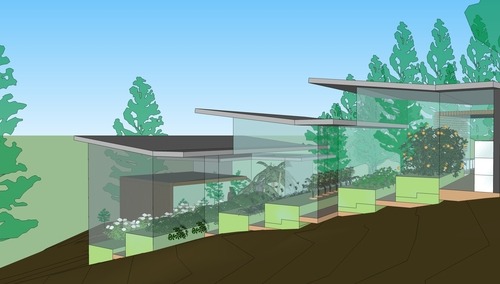

1. Site Design
Careful site design is an essential step when undertaking a passive solar greenhouse in a colder climate. In order to stay warm in the cooler months, a greenhouse needs to receive a significant amount of direct sunlight. In the northern hemisphere this means orienting the long axis east-west in order to give plenty of southern exposure, and choosing a location unobstructed by surrounding buildings or trees.
2. Foundation
Once you’ve decided on the location of your greenhouse, anticipate constructing a foundation wall that goes well below the frost line – the depth at which the soil freezes in winter – keeping in mind that the frost line will vary with your latitude and altitude. This will create a “thermal envelope”, effectively sealing off the soil inside from the outside elements. This insulated mass of soil will become one of the keys to your energy savings in the winter and summer months.
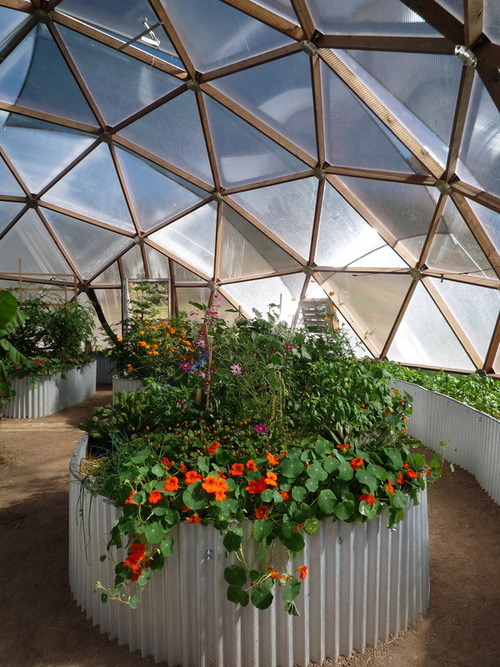
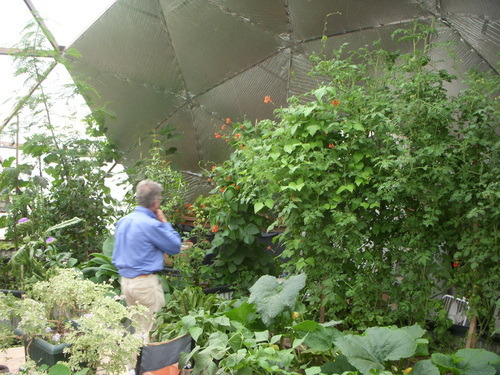
3. Glazing
“Glazing” refers to the transparent material that will cover your greenhouse. Advances in glazing give you a number of choices in both glass and plastics. When making a selection, pay attention to insulation values, solar heat gain, transparency, and whether the glazing will be vertical or sloped. Remember that sloped glazing needs to be diffuse so as not to burn the plants. Lastly, consider insulating your glazing system. Several companies build automated, insulated shutters for greenhouse glazing that can help regulate temperature year-round. For more information about glazing, take a look at this helpful post.
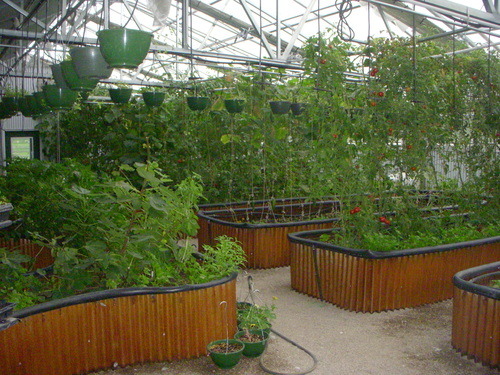
4. Automation
The computer revolution has brought innovative technologies into the greenhouse. Automated systems can allow you to remotely control and monitor your temperature, humidity, light, moisture and CO2 levels. If you’re serious about wanting to grow in a greenhouse and don’t have the full time capacity to run it yourself, these systems are well worth the investment. This site is a great place to start your research.
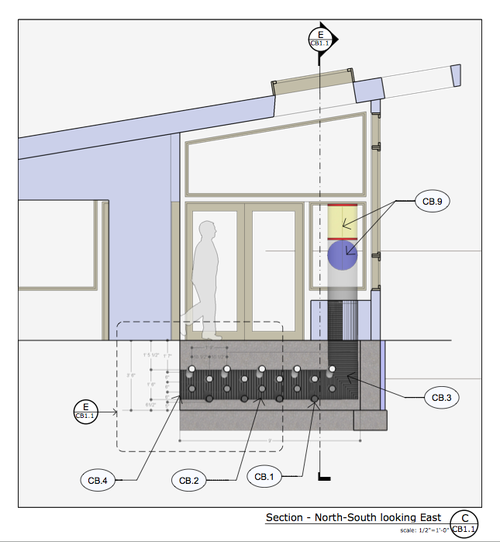
5. The Wonderful ‘Climate Battery’
The climate battery is a genius solution to the problem of natural heating and cooling in greenhouses. It is an air exchange system in which a low voltage fan (or fans) moves hot and cold greenhouse air into a perforated pipe distribution system below the soil on the interior of the greenhouse. During the summer you’ll significantly heat the soil within the greenhouse and start your winter with a bank of warm mass that the climate battery taps into, slowly dropping the temperature in the soil so that temperatures are back in the low 50’s to start your summer. Another nifty trick that happens in dry climates is that when warm moist air comes into the system and starts to cool, it will hit the dew point and that air will release its moisture into the perforated pipe, thus hydrating your soil and tempering the overall humidity in the greenhouse. Yes, the climate battery is that amazing Check out Eco Systems Design, Inc. for more information.
Once your Greenhouse is built and ready to go, it’s time to start gardening! The Central Rocky Mountain Permaculture Institute has logged years of study and experimentation in the art of greenhouse growing, and is a great resource for best practices. Good luck!
Nathan’s appreciation for environmentally appropriate technologies and sustainable systems stems from his first-hand experiences of weather, plants and animals in design. He works with Boulder green architecture firm Gettliffe Architecture.
Find out more about community centered work, ecotourism, sustainable design, international reach and services on Gettliffe Architecture’s website!



Wow, super email Dominique (and Vivian)! . . . . almost tempted me to buy a greenhouse-friendly house, build a system and learn how to garden . . . .
Steve.
I designed, built and lived in a solar heated home at 5600 feet in AZ 30 years ago. I now also live in a solar heated home at 5600 feet, with active solar hot water, radiant slab system, way off grid. Winters often have single digit nighttime temps and sometimes as low as -10F. The 600 SF (!) of hot air collector heated home home had 2.5 feet of 3″ rock storage, with hot air recirculated under the slab. The rock storage air was never brought into the home, as even by 1989, it was well understood that rock storage air becomes a health hazard. I view earth storage by air to the greenhouse as a repeated lapse in judgement regarding air quality for people spending much time in there.
The rock storage was insulated at the sides and via “Swedish skirt” around the perimeter, BUT NOT AT THE BOTTOM, thus attempting to use the earth below as part of the mass.
What I found is that this was not wise, as there most certainly is no way to store heat in the earth for more than 3-4 days at best, it just all dissipates by conduction downwards. In my case, soil temps are 63F all year round at 12 foot deep. Your earth storage in many locations is perched over a virtually infinite mass of 50-55F, dense earth and rock. Heat will gladly follow any path, including downward by conduction. i found that despite my massive heat input to the rock storage, measured at 46KW, it just dissappeared downward. After a number of modifications, including adding insulating shutters on all the windows, the house did work, but I had to use electric baseboard heaters for cloudy periods in winter, as the earth was a loss, not a gain.
For my next solar heated home, off grid, I wised up, and went hot water. Now my house is heated by a single 20 watt, 12V circ pump, and the hot water is created via another 20 watt pump through only a single 4x32ft flat plate collector and stored in a 800 gallon, EPDM lined, insulated tank in my shop. My hot air recirculating house used 4- 1/4 hp squirrel cage blowers (about 3KW) , running 6 hrs a day.
The popular name of “climate battery” and the notion that earth heat storage is seasonal is unfortunately grossly in error. The storage for a typical hardly insulated greenhouse is likely less than 3 days due to the conducted loss downward and outward under the perimeter insulation. This NOT a “Climate Battery”, this is short term storage in a very high loss heated mass.
Instead of more leaky storage, reducing the heat loss of the glazing via insulating blanket, panels or thick mass of bubbles would pay off better. The Ceres – Cure farm greenhouse (a brilliant design) showed the effectiveness of insulating shutters. The benefit/cost of the earth mass heating is still suspect, and is most certainly NOT useful heat storage for more than a 2-3 days.